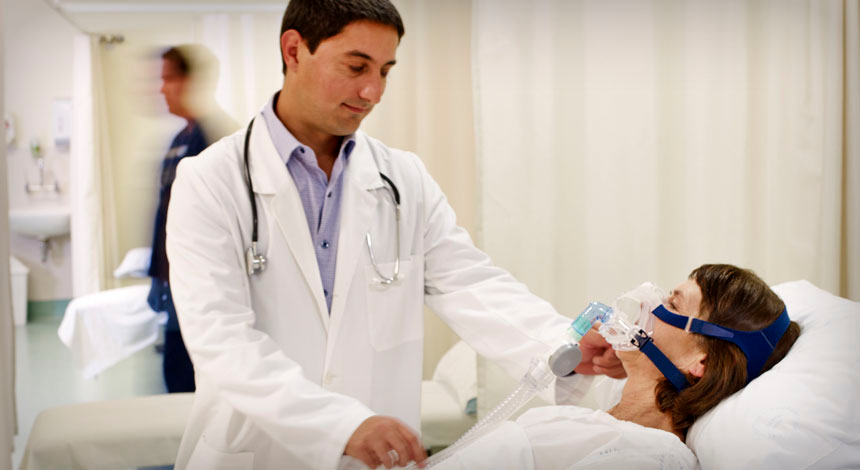Show me the way to...
txt
Show me the way to...

Your doctor will diagnose COPD (chronic obstructive pulmonary disease) based on your symptoms, medical history, a physical examination and a test of how you are breathing, also known as spirometry.1
During spirometry testing, the doctor will ask you to blow into a tube, and the test will record the different measurements of air volume and pressure as you breathe out. Some doctors may also recommend that you have an X-ray or CT scan, so they can have a closer look at your lungs.
In some cases, a blood test may be used to assess the levels of oxygen (O2) and carbon dioxide (CO2) in your blood.
Although there is currently no cure for COPD, there are treatments available to relieve its symptoms, and slow down its long-term development.
Recommended treatments may include:
Because COPD affects your ability to breathe properly (inhaling enough oxygen and exhaling enough carbon dioxide), you can end up with 2 problems:
Although oxygen therapy can address low levels of oxygen, it does not address carbon dioxide retention, but non-invasive ventilation can.3
With increasing evidence supporting the use of non-invasive ventilation, it is becoming a more widely used therapy alongside standard treatments for certain patients. Some of these observed benefits of non-invasive ventilation include shorter hospital stays and readmission rates, reduced need for invasive intubation,4 and improved survival and quality of life.5
If you have hypercapnic symptoms, such as shortness of breath and morning headaches, you can ask your doctor about non-invasive ventilation.
ResMed provides non-invasive ventilators that are suitable for people with COPD.
Learn more about ResMed’s ventilators.
Global Initiative for Chronic Obstructive Lung Disease (GOLD). “Global Strategy for the Diagnosis, Management and Prevention of COPD, 2015.” Goldcopd.com. http://www.goldcopd.org/uploads/users/files/GOLD_Report_2015_Sept2.pdf (accessed November 9, 2015)
McKenzie DK et al. The COPDX Plan: Australian and New Zealand Guidelines for the management of Chronic Obstructive Pulmonary Disease 2003. Med J Aust. 2003;178(6):S15-29.
Brill SE and Wedzicha JA. Oxygen therapy in acute exacerbations of chronic obstructive pulmonary disease. Int J Chron Obstruct Pulmon Dis. 2014;9:1241–1252.
Galli JA et al. Home non-invasive ventilation use following acute hypercapnic respiratory failure in COPD. Respir Med. 2014;108(5):722-8.
Koehnlein T et al. Non-invasive positive pressure ventilation for the treatment of severe, stable chronic obstructive pulmonary disease: a prospective, multicentre, randomised, controlled clinical trial. Lancet Resp Med 2014;2:698-705.
Symptoms include build-up of mucus, cough and shortness of breath. Characterised by bronchitis ...
How does non-invasive ventilation help treat COPD? By enhancing the exchange of oxygen and ...
ResMed’s portable ventilators and comfortable masks have been widely used by COPD patients to ...
This webpage content is intended for Healthcare Professionals only, not for general public.
The content available through this website is for informational and educational purposes only and is not a substitute for the professional judgment of a health care professional in diagnosing and treating patients. ResMed does not give medical advice, nor does it provide medical or diagnostic services. Always seek the advice of a physician or other qualified health provider with any questions you may have regarding a medical condition. Never disregard professional medical advice or delay in seeking it because of something you have seen or read on this Website. For more information, please refer to our Terms of Use.
©2000-2019 ResMed. All rights reserved.